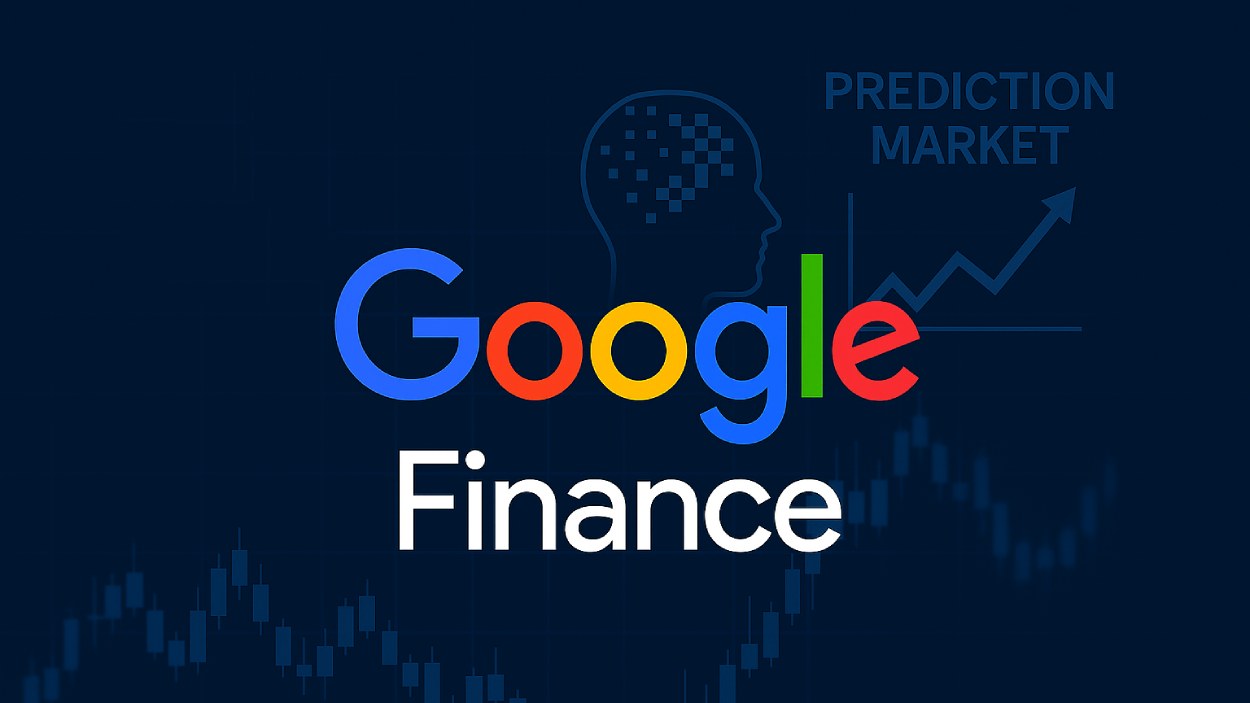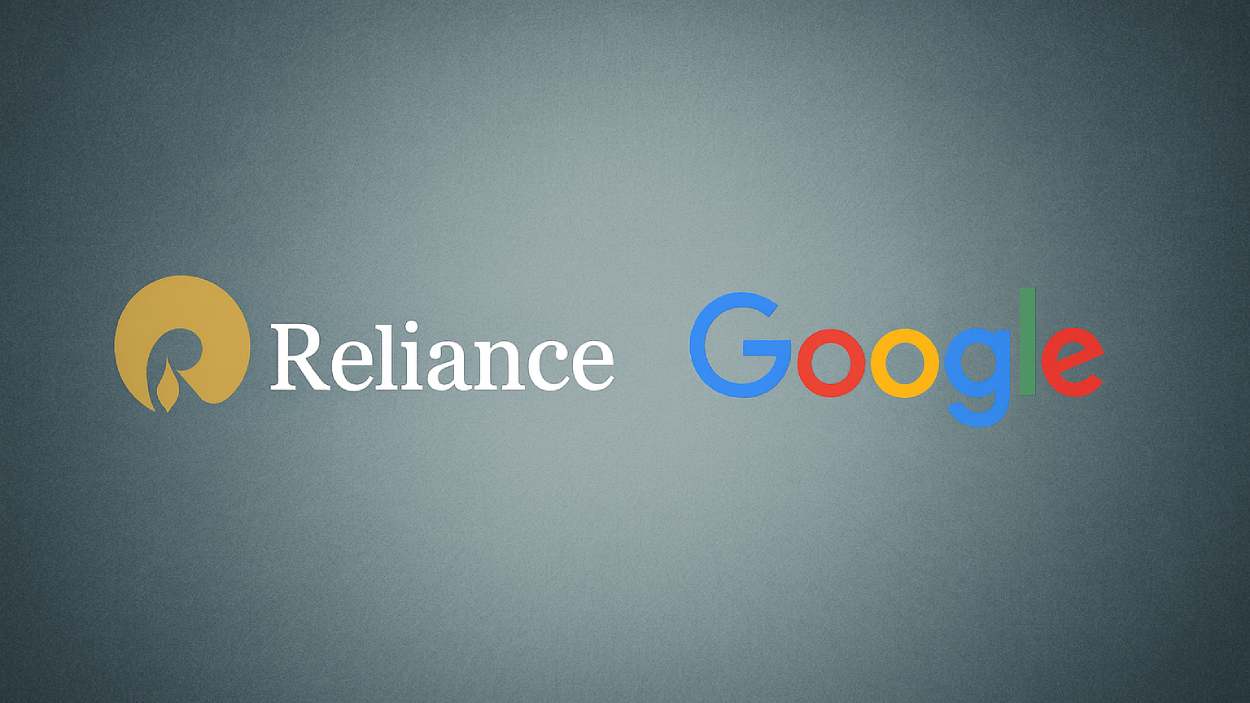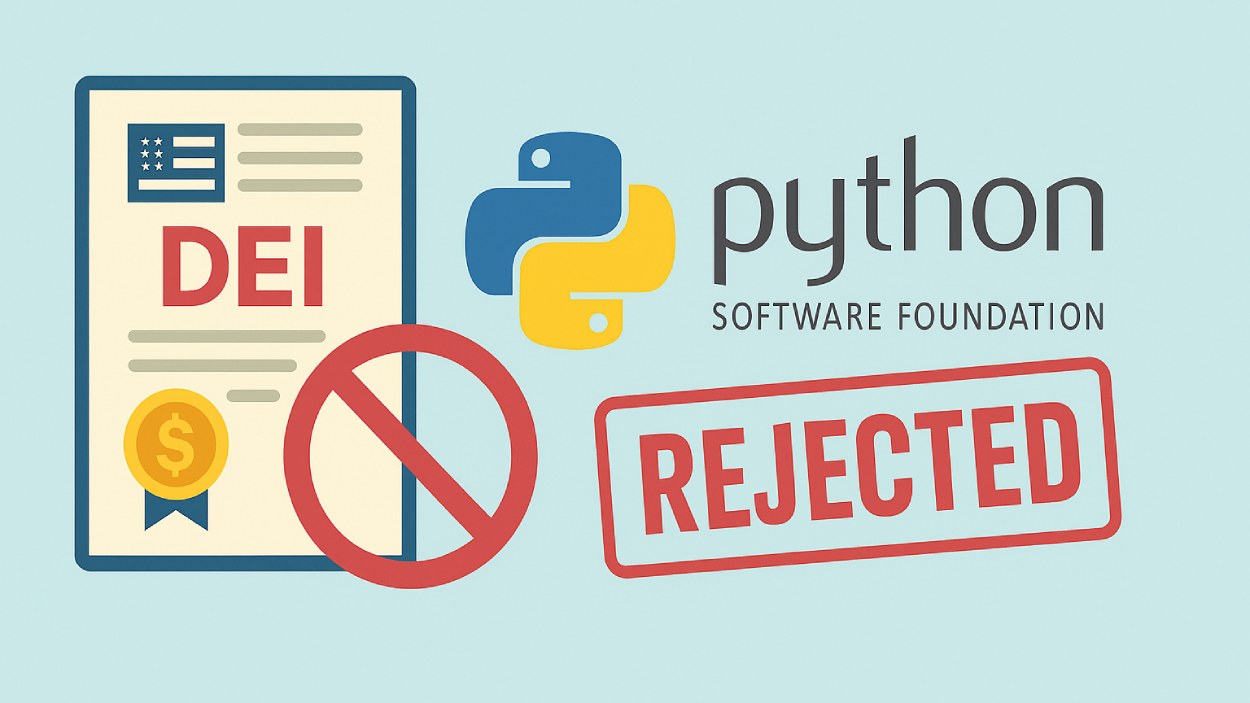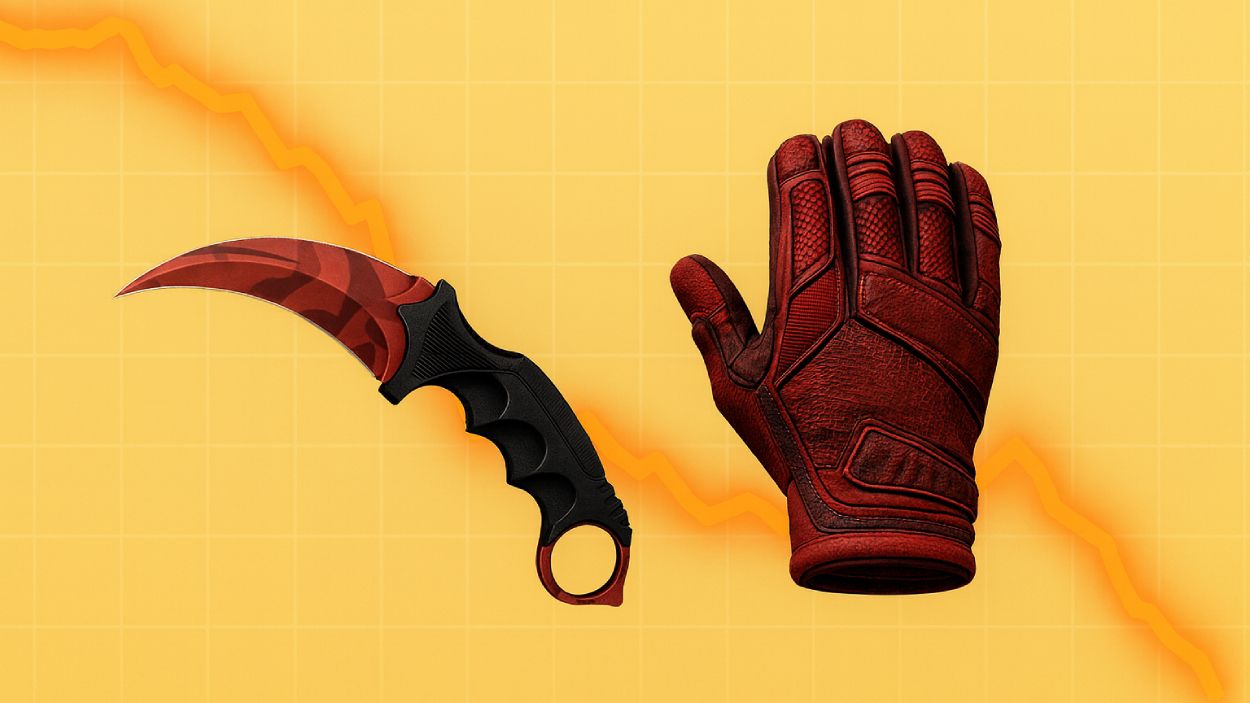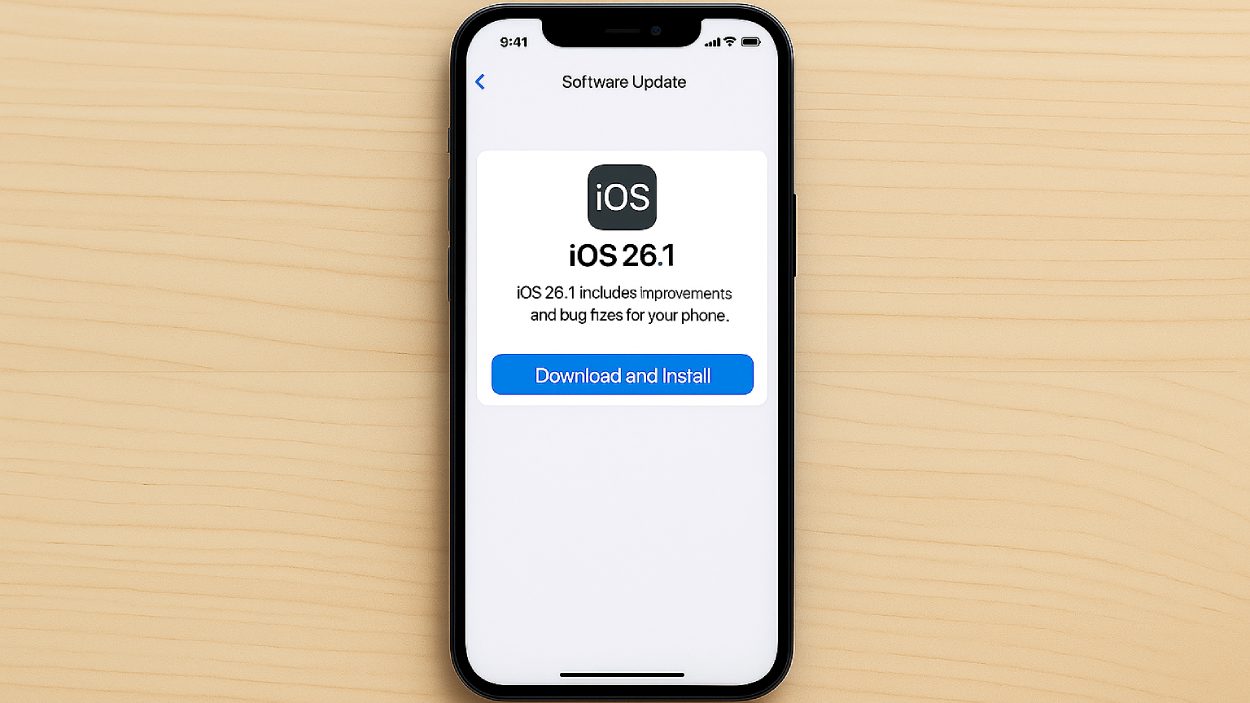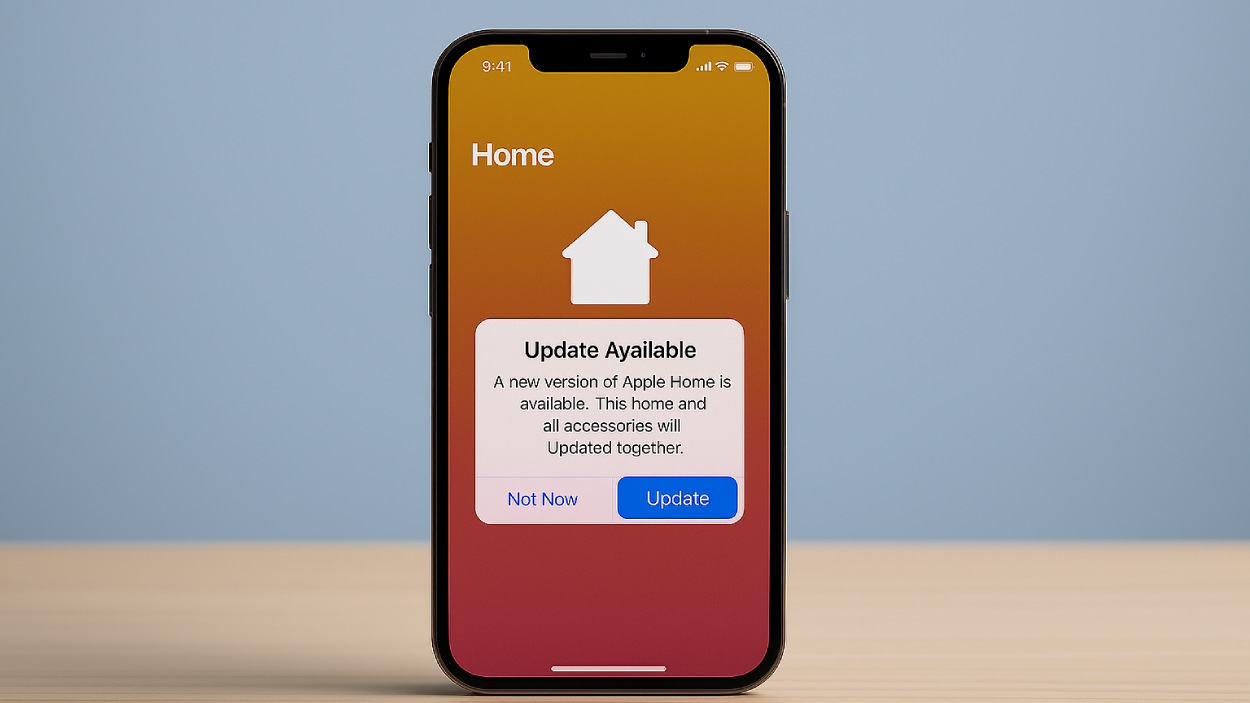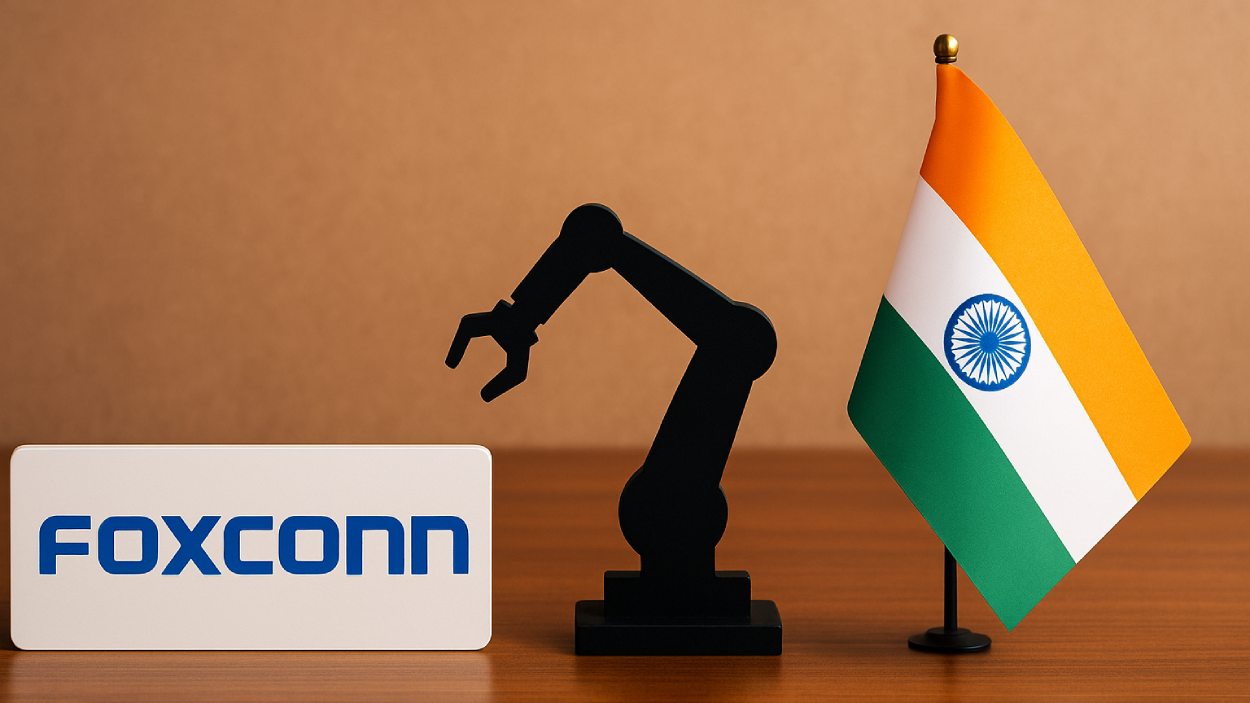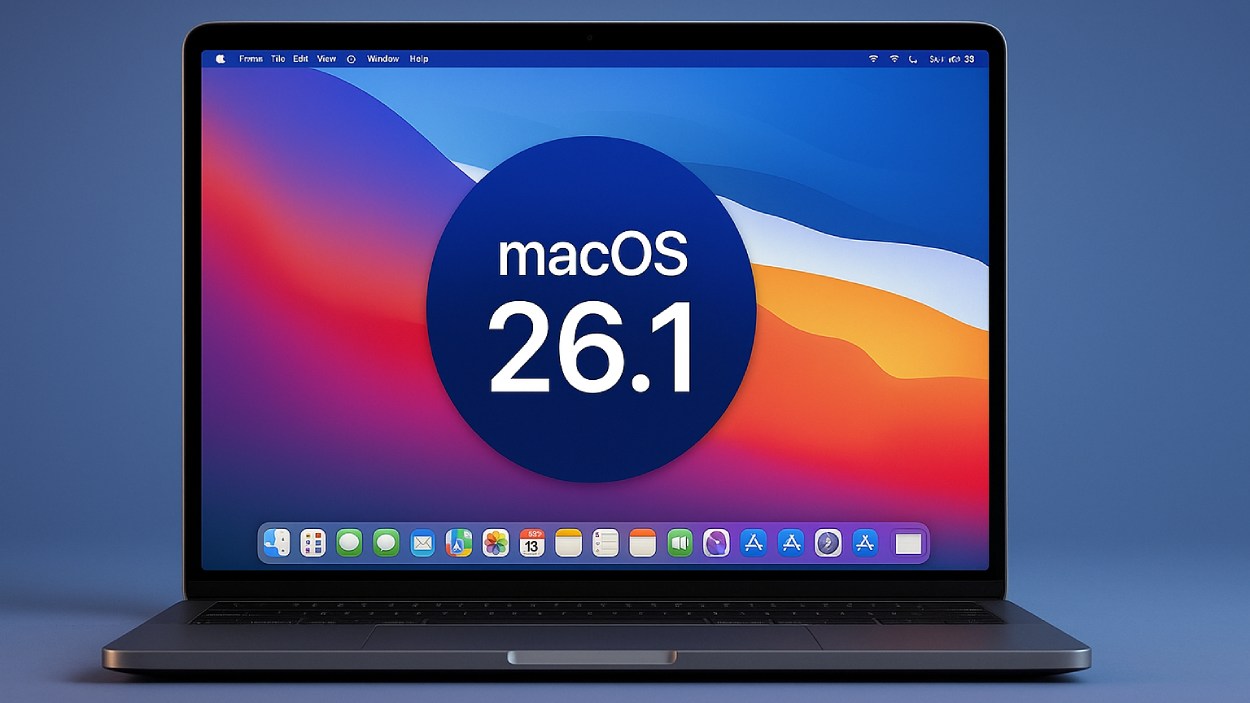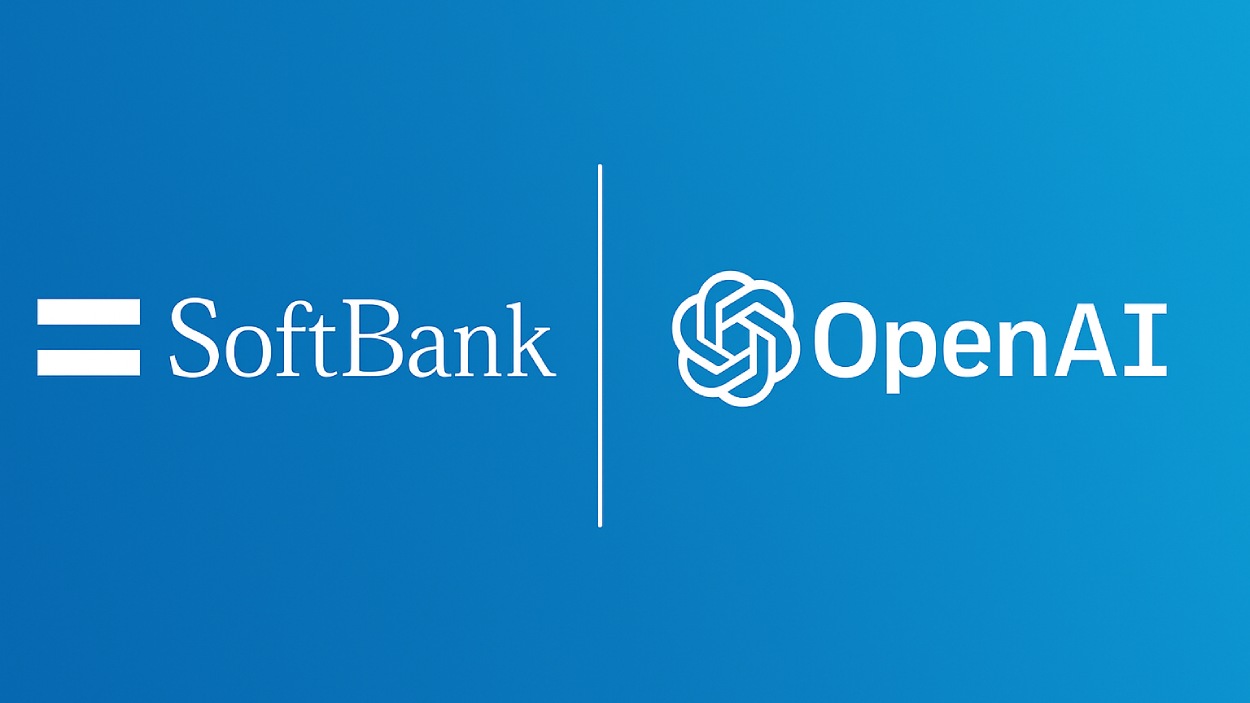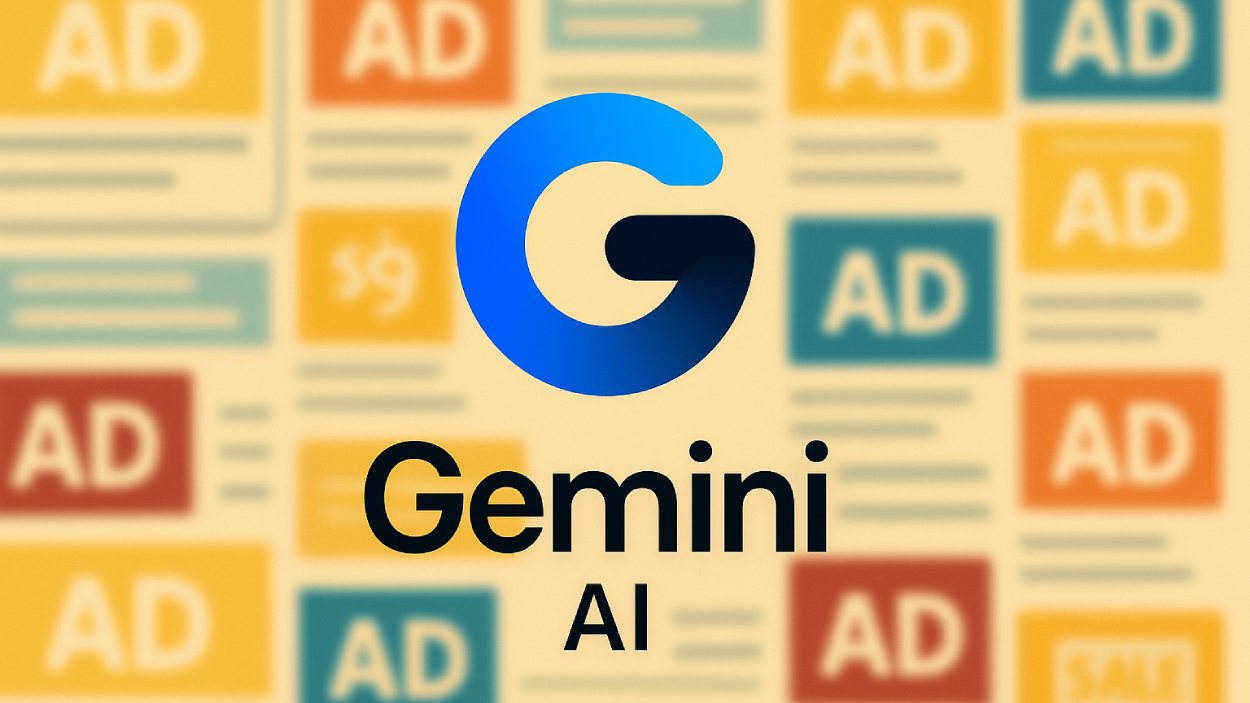It starts with a click. A potential customer lands on your website, and within 0.05 seconds, they’ve made a judgment. This moment shapes the future of your business. Whether you’re a small business owner launching an online shop or a designer aiming to stay ahead, understanding the latest web design trends and statistics in 2025 is critical. In this article, we dig into key data points to help you build websites that are not only beautiful but also highly effective.
Editor’s Choice
- 88% of users are less likely to return to a site after a bad user experience.
- Websites with responsive design see a 22% lower bounce rate on average.
- 69% of businesses in the US are prioritizing website redesigns in their 2025 digital budgets.
- Fast-loading websites lead to a 35% increase in session duration compared to slow ones.
- 41% of website visitors abandon a site if images take too long to load.
- 81% of consumers say trust in a brand is influenced by how professional the company’s website looks.
- Companies that invest in user-centered design see a 228% higher ROI over five years.
How AI Is Powering Web Design
- 58% of designers are using AI for generating imagery, making it the most popular application of AI in web design.
- 50% rely on AI for creating complete web designs, streamlining workflows, and boosting productivity.
- 49% use AI to experiment with new design strategies, allowing for rapid innovation and A/B testing.
- 43% of professionals apply AI to improve design quality, enhancing visual appeal and user experience.

General Website Design
- In 2025, the average cost of a professionally built website in the US is $6,760.
- 94% of first impressions are design-related.
- 73% of companies now operate with a mobile-first design strategy.
- Minimalist web designs lead to a 23% increase in user engagement.
- Sites with video content on landing pages increase conversions by 34%.
- 56% of small businesses plan to revamp their websites by Q4 2025.
- 60% of users consider usability the most critical website design feature.
- Websites using accessibility guidelines see an average traffic increase of 18% year-over-year.
- Typography-first designs improved readability by 31% in recent UX studies.
- Over 80% of websites built in 2025 follow dark mode compatibility standards.
Web Design Industry
- The global web design services market is projected to reach $59.7 billion by the end of 2025.
- Freelance web designers in the US now earn an average of $78/hour.
- 72% of agencies report increased demand for custom web development over template-based solutions.
- 52% of companies say their top hiring priority for H2 2025 is a web developer with strong UX/UI skills.
- AI-assisted design tools are now used by 48% of agencies to speed up workflows.
- Webflow, Framer, and Figma saw a combined 62% rise in adoption among design teams.
- The average turnaround time for a full website project in 2025 is 6.4 weeks.
- SaaS startups allocate around 12% of their seed funding toward web presence and branding.
- Remote design teams make up 64% of the current global web design workforce.
- North America holds the largest market share in the web design industry at 39%.
Top Challenges Faced by Web Designers
- 46% of web designers struggle with finding new clients, making it the most common challenge.
- 24% cite profitability and pricing as a major issue affecting their business sustainability.
- 10% face difficulty in keeping up with industry standards, reflecting fast-changing design trends.
- 8% mention time management as a persistent hurdle in their workflow.
- 7% deal with difficult clients, impacting project satisfaction and delivery.
- 2% find managing a team to be their primary challenge.
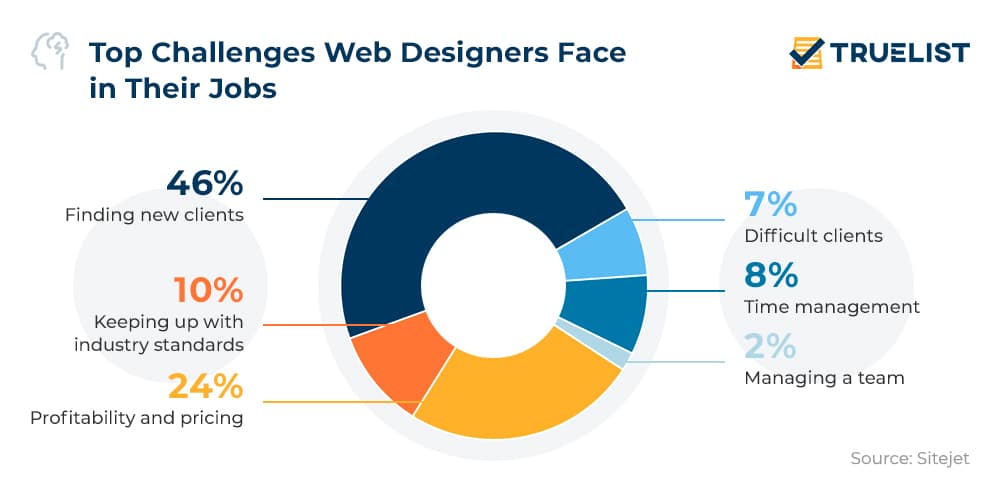
E-commerce Web Design
- 79% of online shoppers say a site’s ease of navigation is the top priority.
- The average ecommerce conversion rate for well-optimized sites is 3.74%.
- One-click checkout features have led to a 23% boost in sales for online retailers.
- Mobile ecommerce now represents 59% of total ecommerce revenue in the US.
- Shopify leads as the most-used ecommerce platform, powering 28% of US online stores.
- Websites with product video previews experience 45% higher time-on-site.
- Personalized design for returning users boosts conversion by an average of 29%.
- E-commerce brands using live chat integrations saw an average lift of 17% in cart completions.
- 47% of consumers expect a site to load in 2 seconds or less, even for product-heavy pages.
- Retailers who A/B test design features at least monthly report 38% higher annual revenue growth.
UI/UX Web Design
- User-centric design has been shown to increase conversion rates by up to 220%.
- 61% of users will leave a website if the navigation is confusing or complex.
- Sites with clear CTAs (Call-to-Actions) convert 42% better than those with vague messaging.
- Rounded buttons improve mobile interaction accuracy by 18%.
- Micro-interactions, like hover effects, improve user satisfaction by 30% in A/B testing.
- Consistent UI patterns reduce user errors by 46%, enhancing accessibility.
- 80% of top-performing websites in 2025 use personalized UX flows based on behavioral data.
- Design systems and reusable components reduce development time by 35% on average.
- Visual hierarchy optimization improves content consumption speed by 27%.
- Voice interface elements are now present in 22% of new web designs, especially in the health and service sectors.
Tasks Web Designers Like and Dislike the Most
- 64% of web designers enjoy the creative process the most, making it the most favored task by far.
- 14% focus on growing and acquiring new customers, reflecting business development interest.
- 9% value interacting with customers, highlighting the role of communication in their workflow.
- 8% are engaged in managing the business, balancing creativity with operations.
- 3% deal with other tasks outside the main responsibilities.
- Only 1% are involved in managing a team, indicating it’s the least preferred or relevant activity.
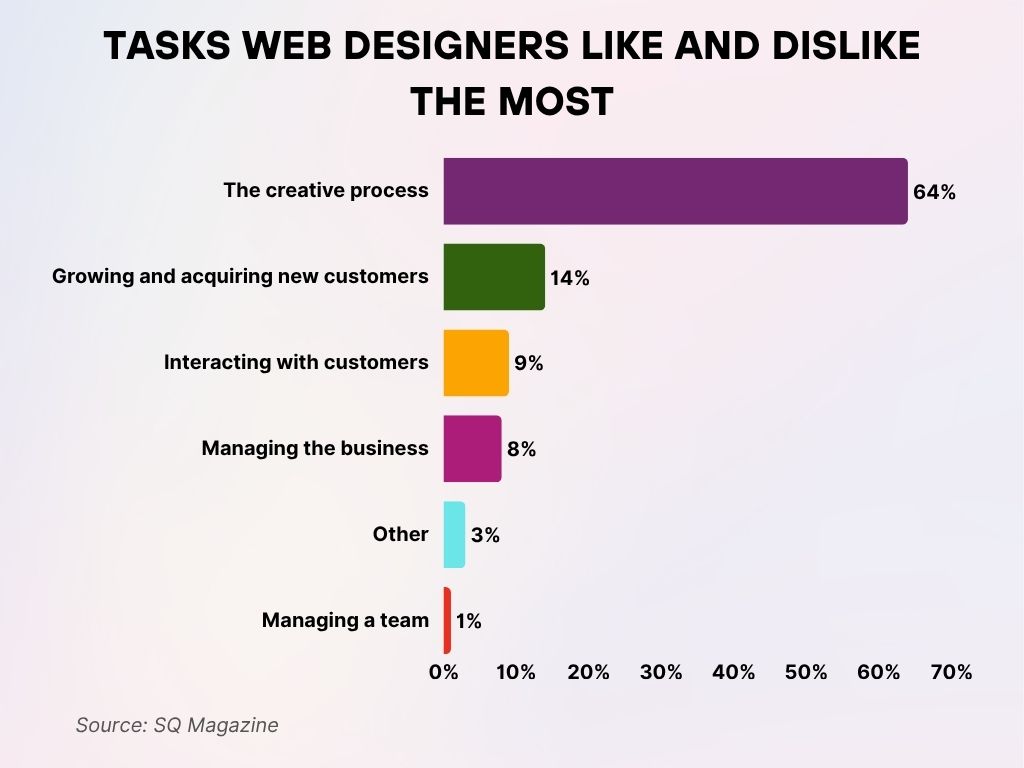
Mobile Web Design
- Mobile-first indexing affects 100% of websites on Google by default in 2025.
- 61.4% of all internet traffic now comes from mobile devices.
- Tap-friendly UI elements increased mobile user retention by 19%.
- Sites optimized for mobile see a 32% higher average page views per visit.
- Progressive Web Apps (PWAs) have grown by 38% in adoption over the past year.
- Load speeds under 3 seconds are achieved by 71% of high-ranking mobile sites.
- Mobile users now expect a touch response time of less than 300 milliseconds.
- 60% of Gen Z users say a poor mobile site experience hurts their trust in a brand.
- Sticky navigation bars on mobile improve page scroll completion rates by 21%.
- Mobile web design incorporating gesture-based navigation rose by 26% year-over-year.
Website Speed + Loading Time
- The average website load time on desktop in 2025 is 2.6 seconds; on mobile, it’s 3.1 seconds.
- A 1-second delay in load time results in a 7% decrease in conversions.
- 54% of users abandon a site if it takes more than 3 seconds to load.
- Sites using image compression tools reduce page weight by up to 45%.
- Implementing lazy loading reduces initial load time by 21%.
- Websites using content delivery networks (CDNs) load 37% faster globally.
- Core Web Vitals compliance improved by 43% among top-ranking websites in 2025.
- Hosting on cloud-native platforms can reduce latency by 18% on average.
- Optimized JavaScript delivery correlates with a 12% improvement in page interaction time.
- AMP (Accelerated Mobile Pages) usage continues to drop, but it still powers 8% of news websites.
Top Reasons Mobile Visitors Abandon Websites
- 88.5% of users leave a site due to slow loading, making it the most critical issue to address.
- 73.0% abandon websites that are non-responsive, emphasizing the need for mobile optimization.
- 61.5% cite bad navigation as a major reason for exiting.
- 38.5% are driven away by outdated design, reflecting the importance of modern visuals.
- 34.6% blame poor content structure for their early departure.
- Only 3.8% leave because of obtrusive use of video or audio, making it the least common reason.
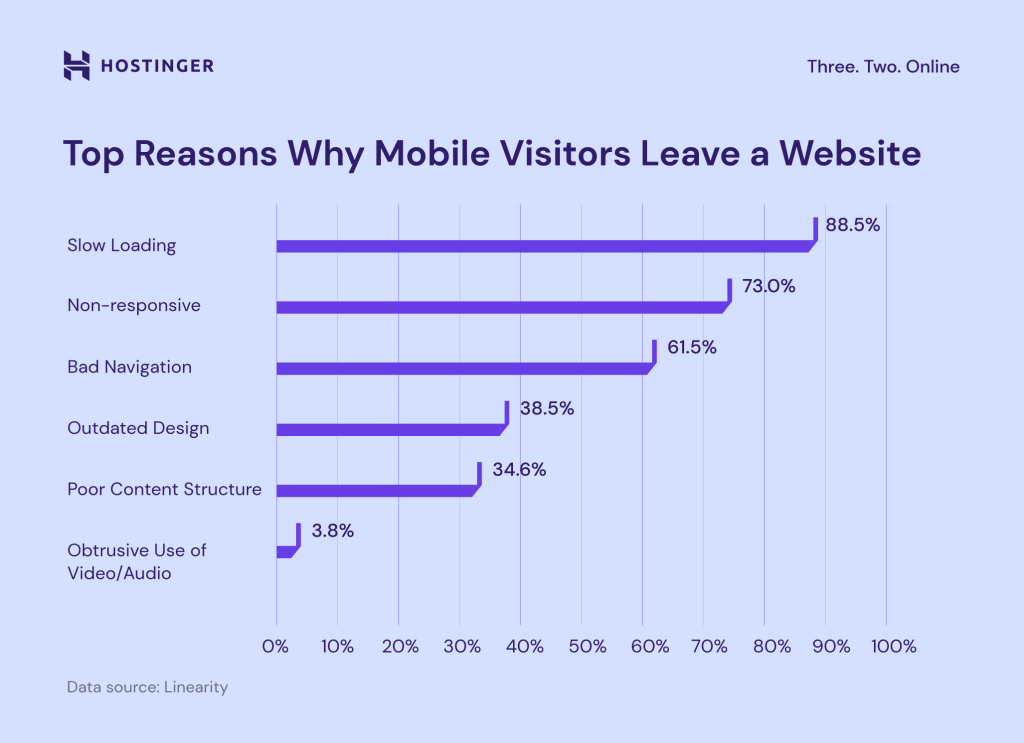
Website Color
- Color consistency increases brand recognition by up to 80%.
- Blue and green tones remain the most-trusted colors among US users in 2025.
- High-contrast color schemes improve readability for 87% of users with visual impairments.
- Websites using warm tones like orange or red for CTA buttons see a 31% higher click rate.
- Dark mode compatibility is now offered on 72% of newly launched sites.
- Brand color palettes are responsible for influencing 45% of users’ first impressions.
- Neumorphism and glassmorphism styles continue to trend, appearing in 21% of award-winning web designs.
- Sites that undergo seasonal palette changes see a 12% increase in returning user engagement.
- Color accessibility testing tools are used by 58% of design teams.
- Pastel shades in backgrounds improve time-on-site for e-learning platforms by 15%.
Business Website Design
- 92% of small businesses say having a website is critical to their success in 2025.
- Businesses that update content regularly receive 2.3x more traffic.
- Contact forms that auto-fill fields boost completion rates by 23%.
- SEO-optimized websites generate 68% more leads than those without optimization.
- Over 80% of B2B buyers visit a company’s website before making a purchase decision.
- Live chat integrations increased customer satisfaction scores by 34%.
- About Us pages with team photos improve brand trust by 21%.
- Secure (HTTPS) websites are now a standard, with 98% adoption among US businesses.
- Business websites with embedded testimonials see a 35% increase in conversion rates.
- Companies using local SEO landing pages increased local traffic by 29%.
Most Common Web Design Mistakes Made by SMBs
- 84.6% of small businesses make the mistake of crowded web design, overwhelming users with cluttered layouts.
- 38.5% fail to include a clear call-to-action, weakening conversion opportunities.
- 30.8% suffer from hidden navigation, making it difficult for users to find key pages.
- 26.9% have bad web typography, which affects readability and user engagement.
- 19.2% struggle with the poor use of whitespace, leading to a cramped and confusing visual experience.
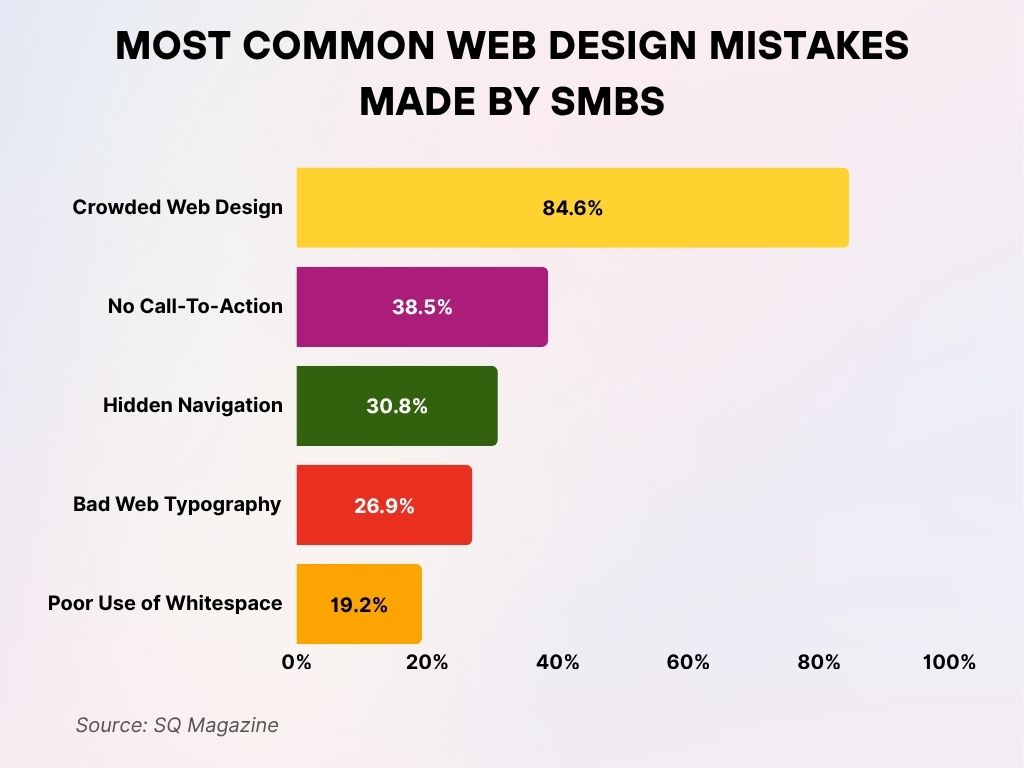
Modern Web Design
- Asymmetrical layouts are used in 43% of newly launched websites in 2025 for enhanced visual engagement.
- Glassmorphism and soft UI styles have grown by 36% in implementation this year.
- Scroll-triggered animations appear in 52% of modern designs, improving interaction rates by 27%.
- AI-generated graphics now feature in 18% of enterprise websites.
- Parallax scrolling is used by 25% of top-performing creative portfolios.
- Split-screen layouts have made a comeback, used in 12% of tech and agency websites.
- Sites that incorporate an interactive storytelling experience 35% higher average time on page.
- 3D elements (WebGL, Three.js) are found in 8% of e-commerce homepages.
- Minimalist navigation menus improve click-through rates by 17%.
- Virtual reality previews are now embedded on 11% of real estate and retail product sites.
Impact of Web Design on Conversion Rates
- Well-structured landing pages convert up to 68% better than cluttered ones.
- Responsive design alone increases mobile conversion rates by 24%.
- Websites with clear visual hierarchy improve form completion rates by 22%.
- 60% of marketers say design improvements directly impacted revenue growth in 2025.
- Trust badges and visual assurance elements boost checkouts by 18%.
- Simplified forms with fewer fields raise completion rates by 37%.
- Incorporating video testimonials increases trust signals, leading to a 29% lift in conversions.
- Behavior-triggered popups generate a 3x higher CTR compared to static ones.
- Design A/B testing is now practiced monthly by 58% of e-commerce companies.
- Whitespace optimization has been proven to increase focus and boost engagement by 14%.
How Much Businesses Spend on Web Design Annually
- 19.7% of businesses spend $2,501–$5,000 per year on web design, the most common budget range.
- 18.9% allocate $501–$1,000, showing a strong preference for low to mid-tier investments.
- 13.9% invest $1,001–$2,500, balancing affordability with quality.
- 9.0% spend $5,001–$10,000, indicating a willingness to invest in more advanced design services.
- 8.2% dedicate $10,001–$25,000 to web design annually.
- 7.4% keep it minimal at $101–$500, often representing micro or early-stage businesses.
- 5.7% spend only $1–$100, the lowest investment bracket.
- 4.9% budget $100,001–$150,000, showing a small segment of high-end investment.
- 4.1% of businesses fall into two categories: $50,001–$100,000 and more than $200,000.
- 2.5% spend $25,001–$50,000, while just 1.6% allocate $150,001–$200,000 yearly.
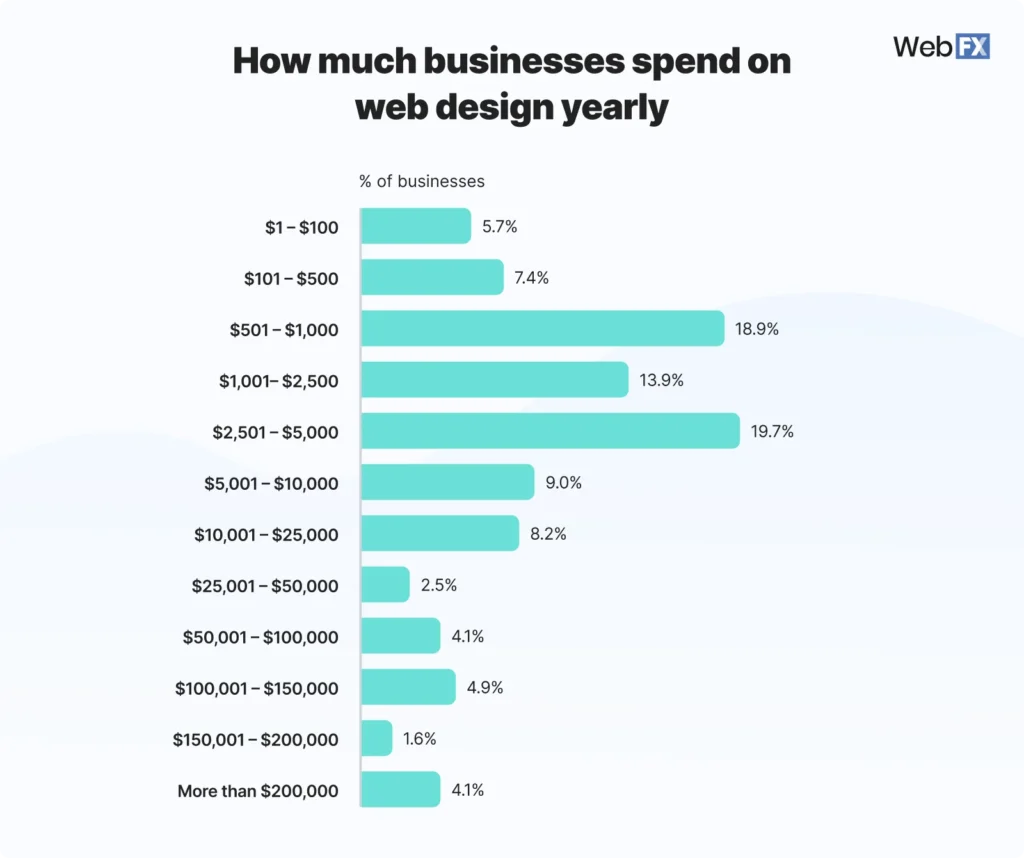
Accessibility and Inclusive Design
- 94% of websites still fail basic Web Content Accessibility Guidelines (WCAG 2.1) tests.
- Alt text usage improved by 31% year-over-year in commercial websites.
- Keyboard navigation compatibility is now a feature in 67% of government and education websites.
- Text resizing tools are standard on 38% of nonprofit websites.
- Businesses that invest in accessibility see 23% more organic traffic.
- Accessible color contrasts improved UX scores by 19% on average.
- Sites with screen reader support achieved 12% higher user satisfaction ratings.
- Closed captioning for video content grew by 41%, especially in the legal and education sectors.
- Accessible fonts like OpenDyslexic or Atkinson Hyperlegible are used in 14% of public health sites.
- US lawsuits over digital inaccessibility rose by 13% in 2025, reinforcing compliance importance.
CMS and Website Builder Usage
- WordPress remains the market leader with a 42.5% share of all websites in 2025.
- Wix and Squarespace jointly power 15% of new small business sites launched this year.
- Webflow has grown by 28% in the past year among agencies and startups.
- CMS usage across all sites has reached 67.3%.
- Drag-and-drop editors are now used by 54% of non-technical users.
- Headless CMS adoption increased by 19%, especially in e-commerce.
- SEO plugins and apps are utilized by 86% of CMS-built sites for optimization.
- Websites using CMS-integrated analytics tools report 31% faster marketing decision-making.
- Multilingual content support is enabled on 24% of CMS-driven websites.
- Open-source CMS platforms like Joomla and Drupal still hold 6.8% of the market.
Recent Developments in Web Design
- AI-powered design tools like Uizard and Wix ADI saw a 46% increase in usage.
- No-code and low-code platforms now support 42% of all new website builds.
- Voice search optimization is actively implemented by 39% of digital marketers.
- Websites using real-time personalization increased visitor-to-lead conversion by 31%.
- Sustainable web design principles (green hosting, compressed assets) are used in 22% of projects.
- Blockchain-based domain verification tools are integrated on 5% of fintech and legal sites.
- Motion UI frameworks have grown in adoption by 33% for dynamic storytelling.
- Hyperlocal personalization based on location data is now common in 18% of retail websites.
- AI chatbots now appear on 71% of homepages in the service sectors.
- Quantum-safe encryption plugins are being tested on 1.7% of tech company websites.
Conclusion
Web design in 2025 isn’t just about looking good; it’s about performance, accessibility, adaptability, and user satisfaction. From streamlined mobile-first experiences to AI-enhanced personalization, the trends shaping modern websites are deeply rooted in functionality and data-backed decisions. As businesses and developers look ahead, staying current with these evolving stats ensures stronger digital strategies and higher user impact.





































